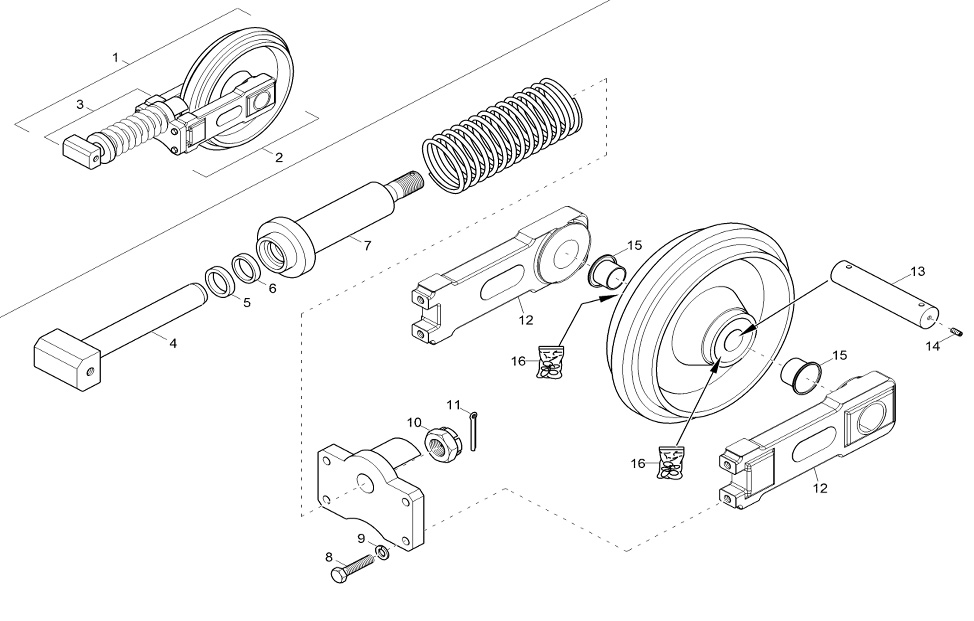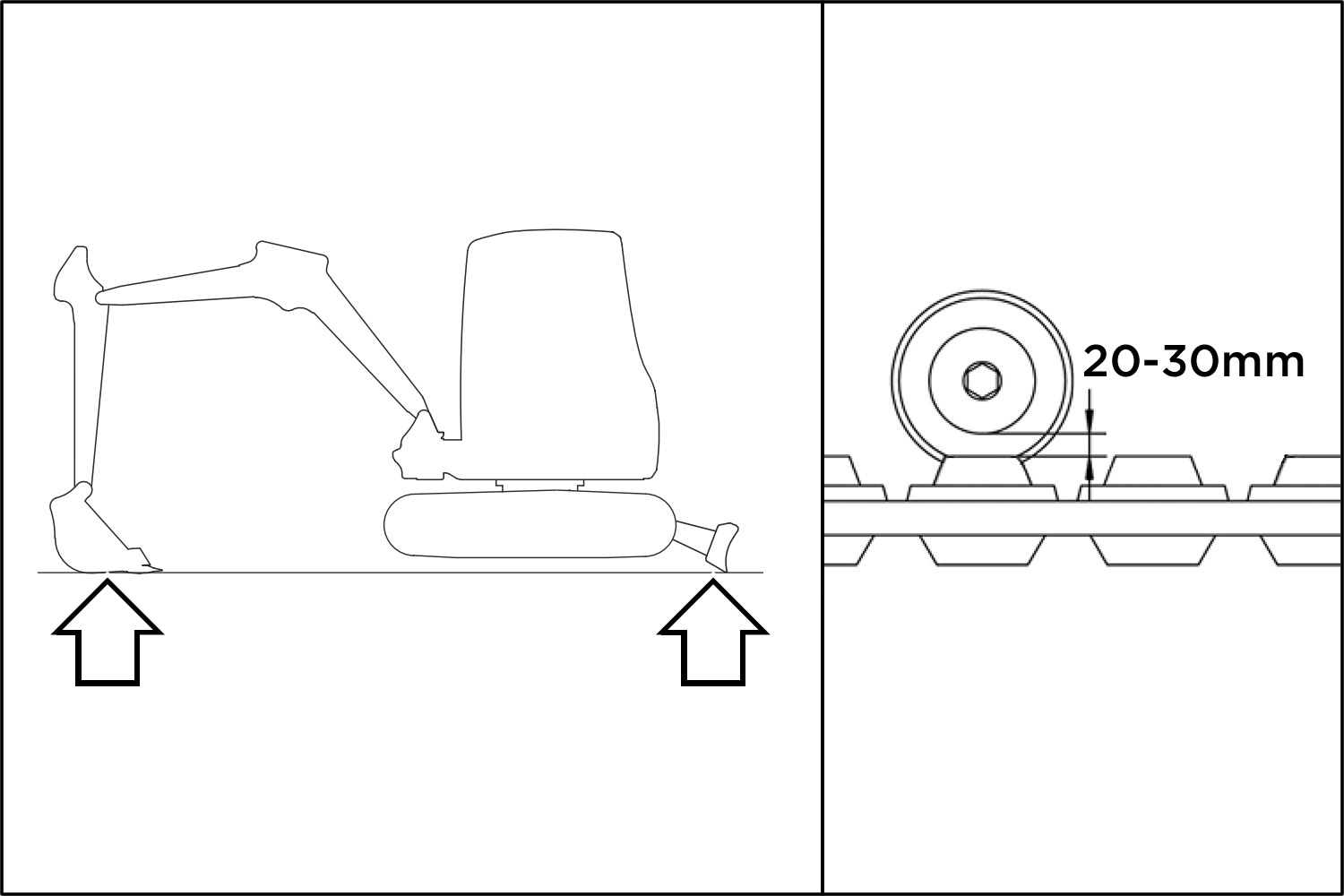Correct Track Tension
Date Posted:8 March 2017
One of the biggest causes of premature track failure is incorrect track tension. It is also one of the most common faults we see on machines brought to us for service and repairs. Along with track failure, over-tensioning of rubber tracks will also cause premature wear on undercarriage components such as idler wheels and travel motor seals.

Over-tensioning is normally caused by inexperience. Most operators are strictly told to grease the excavator once a day or once a week (depending on how many hours it is used a day). As tracks are tensioned via a grease nipple, the common misconception is that the track cylinder also needs daily greasing.
The reason that tracks do not need daily greasing is that the grease in the track cylinder is not used for lubrication. It is used to extend the track cylinder. Track cylinders are connected to the idler wheel via a large spring. This spring is designed as a safety device for the tracks. When rocks or other debris build up in the track chain, the spring will compress to allow debris through without stretching or breaking the belts inside the track. Over-tensioning the cylinder will compress the spring until it cannot compress anymore. Once this happens and a rock is pulled through the track chain, the belts in the track will either stretch or eventually break. Some operators are under the impression that the grease in the cylinder is used to compress when debris is brought through the track. However grease, like all fluids, is incompressible.
To check track tension, the machine should be lifted off the ground using the excavator arm at one end and the blade at the other. On small machines up to around three tonne, a distance of 20-30mm sag between the centre roller and the track is acceptable. On large machines, around 50mm is acceptable. This tension is for rubber tracks only. Steel tracks need a lot less tension than rubber tracks. On an eight tonne machine it would be closer to 100mm.

